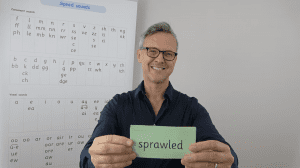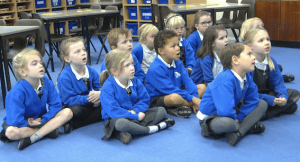

Ruth’s blogs

Ruth’s Blog: Teaching Comprehension Strategies Alert
You wouldn’t teach children to dance by telling them what dancers do. A whole research industry continues to grow to

Ruth’s Blog: Some joined up thinking about dyslexic children and joined up writing
Reception teachers show huge relief when I point out that Ofsted doesn’t require them to teach cursive writing. But then

Ruth’s Blog: Teaching Handwriting in Reception
DO 1. Have enough tables available for children to practise at the same time (where have all the tables gone?). 2. Practise handwriting

Ruth’s Blog: Handwriting Alert
Entry – and most exit – strokes hinder children’s handwriting I invented mnemonic phrases to help children form letters

Ruth’s Blog: The Right Brain for Reading
Take two eight year-olds, Jack and Daisy: same age, but years apart in reading ability. Jack loves reading. He’s always

Ruth’s Blog: Whoopsy Daisy
Me: How’s Daisy doing? Mark: Not very well, actually. She’s in the bottom group. We’ve just had her end of Year 2

Ruth’s Blog: Why book bands block children’s reading progress
You’re creating a new reading programme. The first question you ask yourself is, ‘How can I get all children to read as

Guest Blog: Should we teach phonemic awareness?
By Jennifer Chew In his 1994 book The Language Instinct, Steven Pinker, an eminent American professor of linguistics, points out that in

Ruth’s Blog: Cursive Handwriting in Reception – or not?
What is cursive handwriting? ‘Cursive’ or ‘joined-up’ handwriting is any style of writing where letters are joined to make writing faster. Formal
